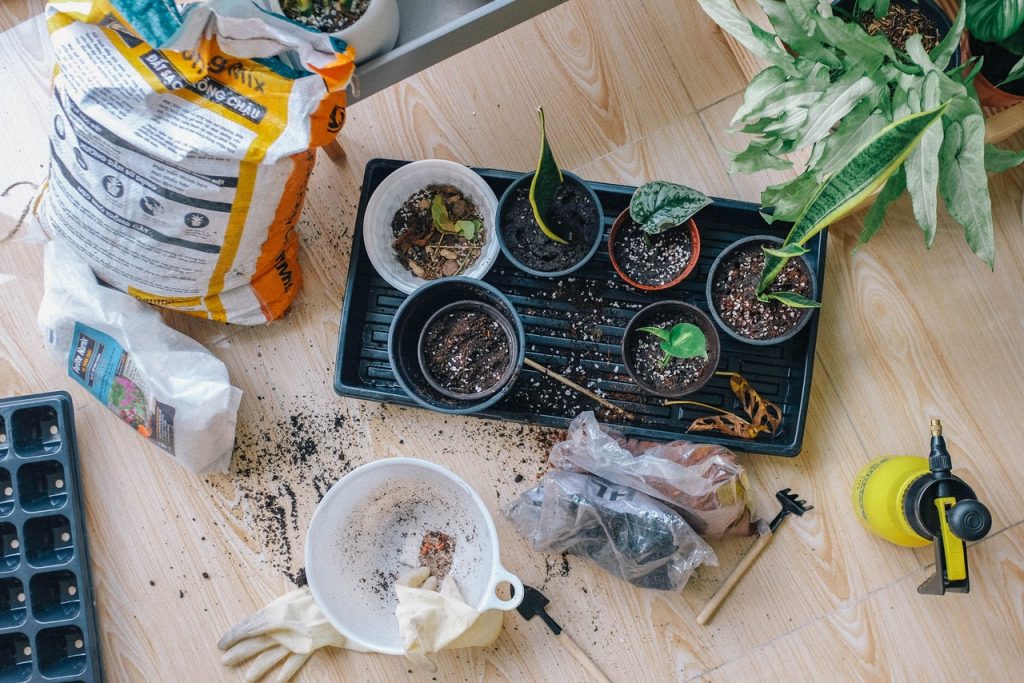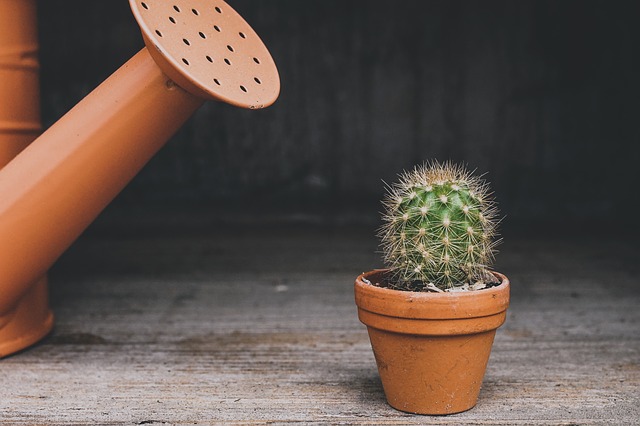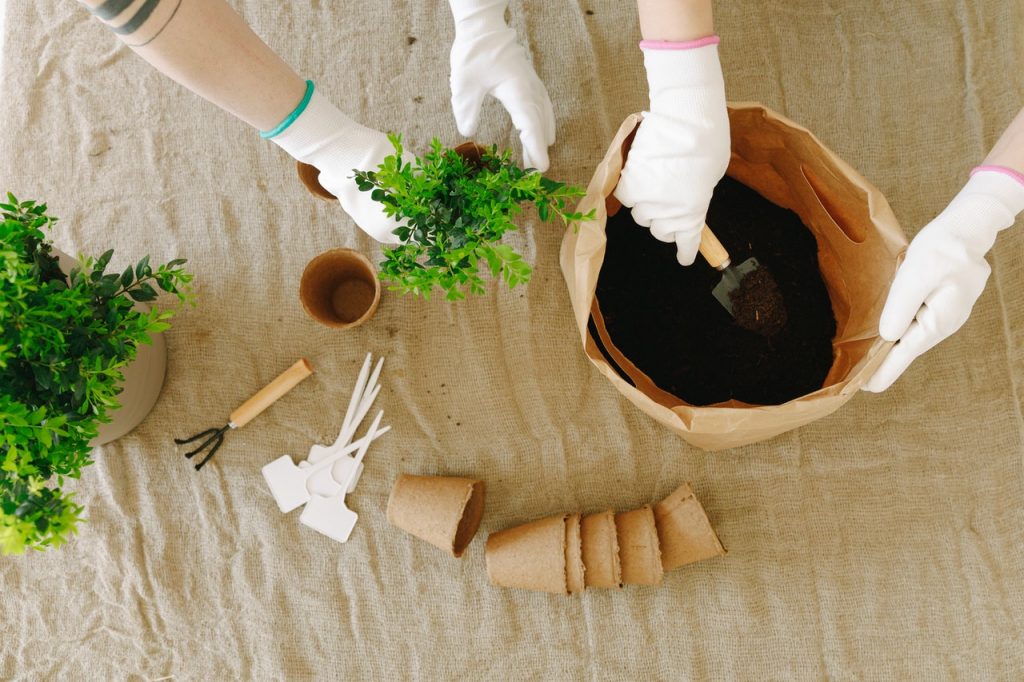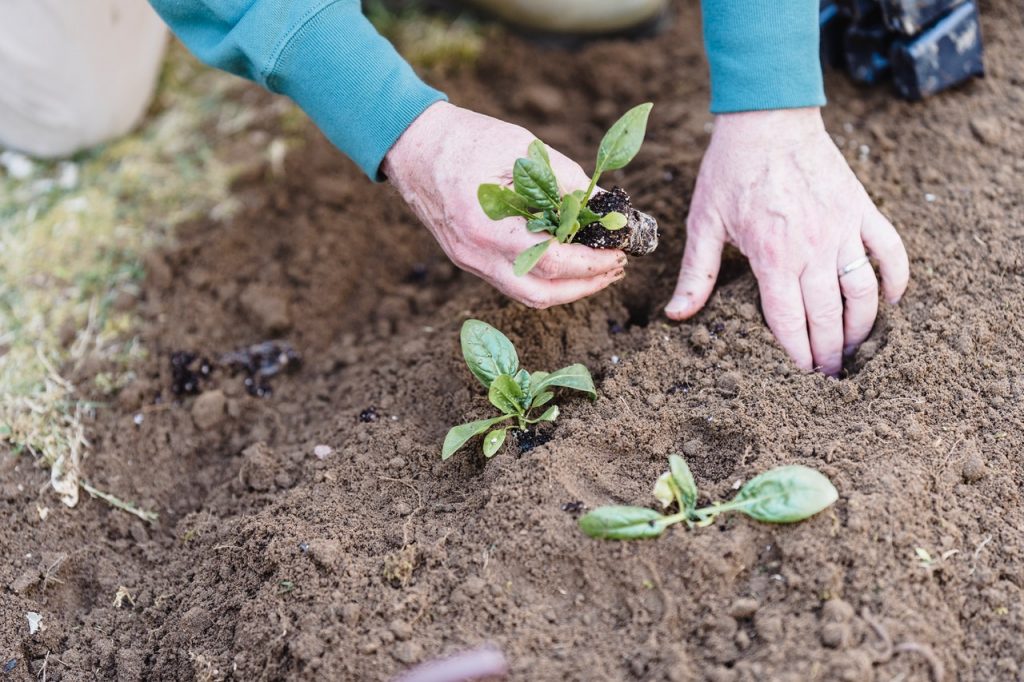
Dusty miller is a tough perennial with a delicate fragrance. It’s easy to grow and can be found at many nurseries as well as DIY stores.
Dusty miller needs to be planted in an area where it will get full sun and well-drained soil. Watering dusty miller just once or twice a week should be enough.
Which Plants Go Best with Dusty Miller?
So, which plants grow well with dusty miller? There are several plants that work well with our silvery friend:
Petunias
 Wave petunias add a bright pop of color to any garden. Like dusty millers, they’re easy to grow and maintain. They stand out well against the silvery background of the dusty and will draw all eyes to your garden.
Wave petunias add a bright pop of color to any garden. Like dusty millers, they’re easy to grow and maintain. They stand out well against the silvery background of the dusty and will draw all eyes to your garden.
Ornamental Grass
 Any ornamental grass which is grown in hot and dry conditions works well with dusty miller. An attractive and muted-color landscape can be created by pairing the two together.
Any ornamental grass which is grown in hot and dry conditions works well with dusty miller. An attractive and muted-color landscape can be created by pairing the two together.
Angelonia
 This “summer snapdragon” plant with its salvia-like leaves is a natural pairing with dusty miller.
This “summer snapdragon” plant with its salvia-like leaves is a natural pairing with dusty miller.
Both are easy to grow, and the bright purple of the snapdragon will contrast well with the dusty.
How to Sow and Grow Dusty Miller
You can sow dusty miller directly in your garden or indoors, depending on where you live and what you prefer. Those living in colder climes may want to sow in a greenhouse because the season is more limited.
Sowing Indoors
 If sowing indoors, start the seeds 4 to 6 weeks before the last spring frost. Remember, this plant loves hot and dry conditions. That means you’ll need to keep the soil temperature between 65 and 75 degrees. The soil should be moist during this time, so mist it down.
If sowing indoors, start the seeds 4 to 6 weeks before the last spring frost. Remember, this plant loves hot and dry conditions. That means you’ll need to keep the soil temperature between 65 and 75 degrees. The soil should be moist during this time, so mist it down.
After 2 or 3 weeks, the seedlings will start to grow. As soon as that happens, give them plenty of light —16 hours per day isn’t too much. 8 hours of darkness will be fine. When they begin to sprout the second set of leaves, you can begin to get them accustomed to the outdoors.
This process of outdoor adaptation, called hardening off, helps plants grow strong and tough. It entails putting them in outdoor conditions before actually planting them in the ground. Do this in a sheltered place, out of the hard wind and rains.
This will get them used to the outdoors before you commit to planting them. It’s imperative you do this if there may still be a frost around the corner. When you’re sure there is no chance of another frost, you can plant them outside.
Sowing Outdoors
 Sowing outdoors is infinitely easier. If you live in a hotter region of the United States, this is probably the best method to use. Sow after the last frost, preferably in an area with full sun coverage.
Sowing outdoors is infinitely easier. If you live in a hotter region of the United States, this is probably the best method to use. Sow after the last frost, preferably in an area with full sun coverage.
Weed the area thoroughly before sowing. If you can, work compost into the soil before planting to provide extra nutrients during the dusty miller’s formative period of life.
Cover the seedlings with ¼ of an inch of loose soil, and keep them moist. After two or three weeks, they’ll begin to emerge. It’s important to thin out the plants when they start coming to prevent crowding. This will cause weaker, smaller plants.
Water them intermittently before they emerge and during their first few weeks of life. If you choose to, you can apply fertilizer after thinning. This will help them grow big and strong, but it isn’t necessary if the soil is already rich.
Techniques for Caring and Nurturing Dusty Miller
1. Watering
 Since the plant grows best in hot, dry weather, you don’t need to water it that often. However, it is not a cactus, so it does require moisture to thrive. So, water it regularly, for long enough to saturate the roots.
Since the plant grows best in hot, dry weather, you don’t need to water it that often. However, it is not a cactus, so it does require moisture to thrive. So, water it regularly, for long enough to saturate the roots.
Don’t water it again until the plant is completely dry and looks as though it’s beginning to wilt. This will ensure that you don’t overwater it, causing root rot or other fungal infections.
2. Fertilizing
 Be careful in your use of fertilizer with dusty miller. This is a naturally tough and vivacious plant, so you don’t need to over-fertilize. In fact, this will cause the plant to become weaker and it won’t grow as nicely.
Be careful in your use of fertilizer with dusty miller. This is a naturally tough and vivacious plant, so you don’t need to over-fertilize. In fact, this will cause the plant to become weaker and it won’t grow as nicely.
The only time you should fertilize is in the early spring as the seedlings emerge. You can use granular slow-release fertilizer for the best results, as this won’t over-fertilize and it will keep providing nutrients for a long time.
3. Mulch
 Mulching is another good idea. It helps prevent the growth of weeds and keeps the soil warm. Eventually, the mulch will promote aeration of the soil as well. You can use grass, bark chips, leaves, or another suitable mulch material.
Mulching is another good idea. It helps prevent the growth of weeds and keeps the soil warm. Eventually, the mulch will promote aeration of the soil as well. You can use grass, bark chips, leaves, or another suitable mulch material.
Spread the mulch on, making sure it’s 2 or 3 inches thick. If you’re using cut grass as a mulch, don’t exceed 2 inches. Grass is thick, and it can trap heat and make the temperature skyrocket past what dusty miller will tolerate.
4. Pest Problems
 Aside from root rot and fungal diseases, this plant is not known to be susceptible to many other pests. Depending on where you live, this could be different.
Aside from root rot and fungal diseases, this plant is not known to be susceptible to many other pests. Depending on where you live, this could be different.
However, the fuzzy silver leaves are generally not attractive to animals. If you do have problems with pests, check out these gardening hacks to keep them away.
Pruning Your Dusty Miller to Perfection
 Dusty miller is grown for the foliage. Its shiny leaves are what attract our eyes and help keep pests away. However, it does grow flowers once it reaches maturity.
Dusty miller is grown for the foliage. Its shiny leaves are what attract our eyes and help keep pests away. However, it does grow flowers once it reaches maturity.
The flowers are largely considered unattractive and should be pruned back as soon as they appear. They steal energy away from the foliage, and pruning them helps keep the leaves strong.
You should also prune the leaves around midsummer. You can do this by shearing away the top 1/3 of the plant all at once, or by cutting away the long stems a little at a time. Though the latter means more work for you, it helps the plant keep an attractive appearance for longer.
Plant Dusty Miller for Contrast and Protection
 Now that you know all about dusty miller, it’s time to take the plunge and plant some in your garden.
Now that you know all about dusty miller, it’s time to take the plunge and plant some in your garden.
The possibilities with this plant are nearly endless, and it provides valuable protection as well as a beautiful backdrop.
So, what are you waiting for? Get out there and sow some seeds.

